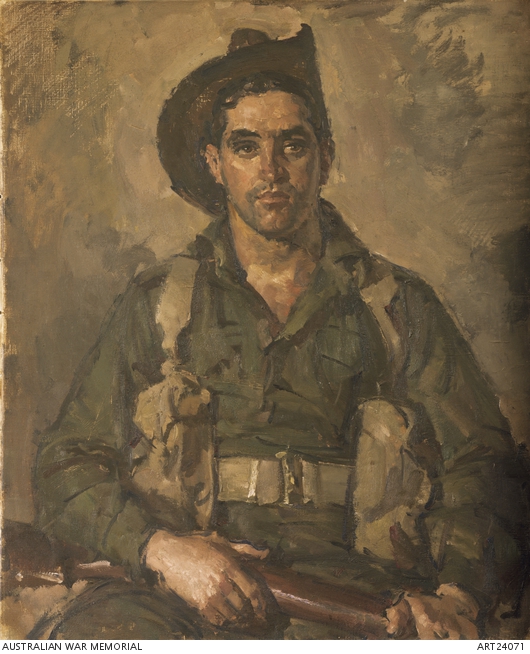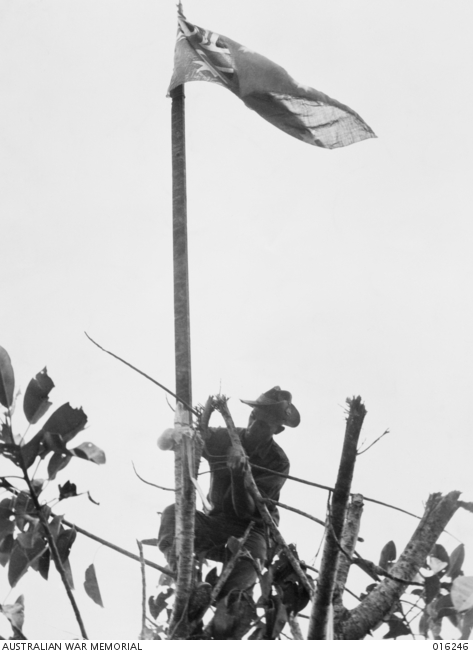Fifty Australians - Diver Derrick
Possibly the best known Australian soldier during the Second World War. Derrick was seen by many as the embodiment of all those best characteristics widely attributed to the Australian “digger”.
Lieutenant Thomas Currie Derrick, VC, DCM (1914–1945)
Tom Derrick survived the Depression in South Australia by doing a variety of jobs; he married in 1939, and joined the second AIF a year later. He went to the Middle East with the 2/48th Battalion and became one of the “Rats of Tobruk”. A year later, at Tel el Eisa, in July 1942, he won the Distinguished Conduct Medal for his part in the attack on enemy machine- gun posts and some tanks.
Tough, with a larrikin grin, Derrick was also intelligent and thoughtful. A natural and inspiring soldier, he was promoted to sergeant. In October, in the battle of El Alamein he was wounded. Later, after returning to Australia the 2/48th Battalion was sent to New Guinea.
In the assault on Sattelberg in November 1943, Derrick displayed great leadership and courage, for which he received the Victoria Cross. Just as the attack was looking to have been futile, he took charge and engaged the enemy at close quarters with grenades.
He then led his men in destroying ten enemy posts and held the ground during the night. It was fitting that next day Derrick was the one who raised the Australian flag over Sattelberg.
Derrick’s exploits brought him to wide public attention; he was a legendary figure in the 9th Division. When he returned to his battalion as a lieutenant from an officer training course, “there was great jubilation”.
The end of the war was almost in sight when in May 1945 the 2/48th landed on Tarakan Island and was again in tough fighting. On the 22nd, Derrick’s platoon was under heavy fire; he was hit in the stomach and thigh, and died the following day. The news of his death spread like a shock-wave through the division. It seemed, as one soldier said, that “the whole war stopped”.
Sergeant Derrick raises the Australian flag following the capture of Sattelberg on 3 December 1943.
- Home
- Previous: Roden Cutler
- Next: Tilly Devine



